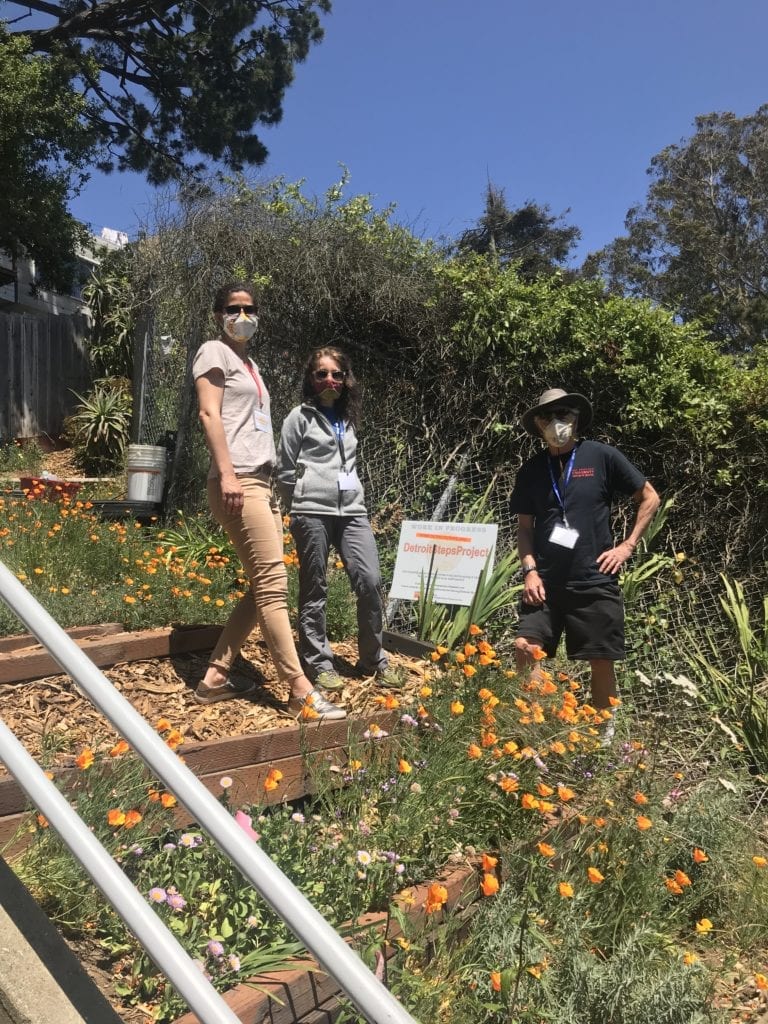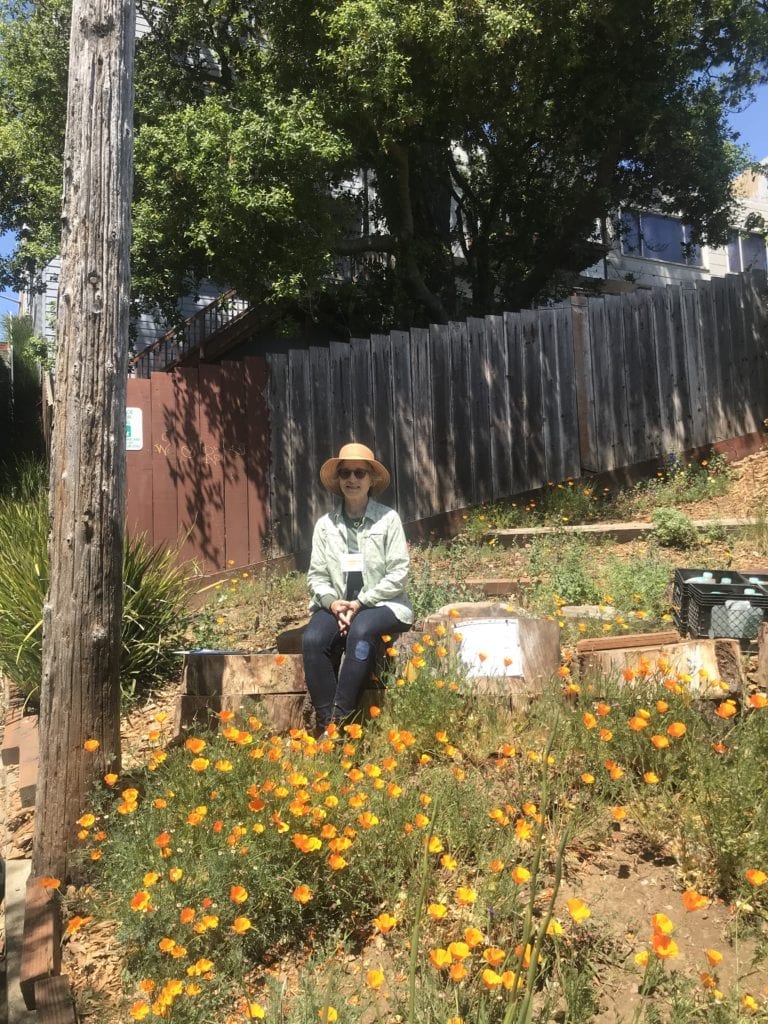
On April 20, the Detroit Steps Project (DSP) got a well-deserved step up.
It became one of 28 recipients of the Community Challenge Grant Program (CCG), a division of the City Administrator’s office that funds worthy neighborhood projects.
The Sunnyside multi-phased community-led endeavor to improve and beautify the 186 Detroit Steps with landscaping and tiling was awarded a whopping $110,185 in funding.
It’s the heftiest grant received to date by the Steps.
Divided into upper and lower steps that are bifurcated by Monterey Boulevard, the Detroit stairway performs as a sequestered easement between Glen Park and the Sunnyside.
“These funds go toward helping define the character of our Sunnyside neighborhood,” said Pam Parker, a founding member of the DSP, about the neighborhood that stretches from City College of San Francisco in the south to Dorothy Erskine Park to the north.
A fiscally sponsored community partner of the San Francisco Parks Alliance, the DSP began its efforts in November 2018 and in 2019 was awarded a District 7 Participatory Grant to replace a chain link fence and install a water meter.
With the announcement of the CCG award, the DSP will commence additional safety and beautification efforts, which include pedestrian safety lighting to the Upper and Lower Steps walkway and continuing the terracing of the Upper Steps with drought-tolerant plants such as California poppies, blue-eyed grass, sticky monkey flower and seaside daisy.
On May 8, on a spring Sunnyside afternoon, four DSP volunteers assembled on the Upper Steps, a quilt of lupin, yarrow, coastal strawberry and buckwheat enveloping them.
“The grant award will fund professionally leveling and this space will become a ‘Pollinator Corridor,’” Suna Mullins, the DSP media liaison said in a press release. “It will attract native butterflies and bees.”
As if to prove her case, on May 8 bumblebees gamboled in orange poppies and seaside daisies.
Daryl Browne, who lives on Melrose Avenue watched. “They’re loving it!”

Swallow tail butterflies zero in on the fecundity, as well.
“They love feasting on Angelica,” said Browne, who, when he’s not weeding the Upper Steps, volunteers in Glen Canyon and the Melrose Garden.
Presently, the nearly 200 steps lack sufficient illumination, so the addition of lighting is necessary in creating a safe and usable space for the community.
“We don’t think we have enough money in this round for all the lighting,” said Mullins, “but we will initiate as much as we can, even if it comes to only selecting and planning until we can implement with future funding.”
But while the lighting will be phased in, work on making the Upper Steps a habitat-friendly refuge continues, according to DSP’s Rosaura Valle who turned up on May 8 to take measurements. She envisions the corridor not only accommodating winged species, but also obliging day trippers as a foliage friendly nook. Descending the steps from Joost Avenue, walkers will be greeted by graded native plant gardens, stabilized by a decomposed granite path and a pressure treated wood retaining wall.
Welcoming log seating, as well, will rest upon mortar-set flagstone and await those hankering sylvan seclusion only thirty yards from bustling Monterey Boulevard.
But this is not the half of it.

“The present CCG award also paves the way for future funding opportunities toward fully tiling the steps, as well” emailed Pam Parker.
The vision Parker amplifies is one she says will “create a neighborhood landmark for all to enjoy.”
The DSP Steering Committee has met regularly for three years, envisioning its project, then putting boots on the ground with regularly scheduled work parties to fulfill its promise.
A sizable proportion of the April 20 CCG grant is earmarked for designing, fabricating and installing a custom and decorative archway on Monterey Boulevard over the Lower Steps, using material and custom design to complement the new fencing.
As it moves forward, the timeline is contingent upon DPW installing fencing and a water meter and backflow on the Upper Steps.
“Once this happens,” said Suna Mullins, “we can begin leveling and continue planting.”
Surveying the tucked-away hollow, alive with thickets of cuplike poppies, one would never leave with the impression these four neighborhood advocates have been idle.
One thing for certain. The beneficiaries will be pedestrians such as Joy Durighello, who lives on Martha Hill and who has used the steps each day to walk to CCSF where she taught English. Retired for several years, Durighello has been volunteering her time to place and nurse plants along the Upper Steps throughout the pandemic, and on May 8 took time to survey the floral mosaic she has, with the help of Daryl Browne, fashioned along the steps over the last year.
These uninviting and crumbly cement steps that date back to the Great Depression and require City overhaul, long a depository for litter, weeds and graffiti, descend from Joost Avenue and end at Monterey Boulevard. With Public Works supervision and DSP partnership they will morph into something much more pleasing to the eye. Then they’ll bond with the Lower Steps across the four-lane boulevard, already chockablock with inviting greenery, and end at a cul du sac only yards from Hearst Avenue.
Looking toward that day, not so far off Joy Durighello weighed in.
“I hope the beauty of the steps,” she told the Glen Park News, “will encourage people to walk them.”
